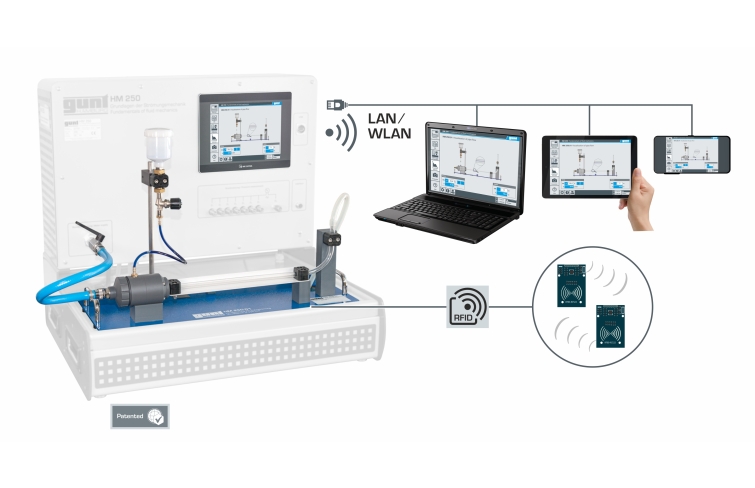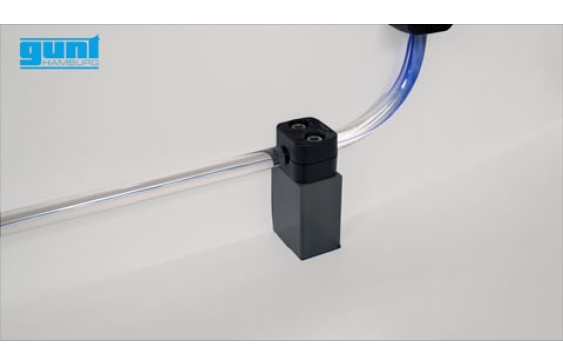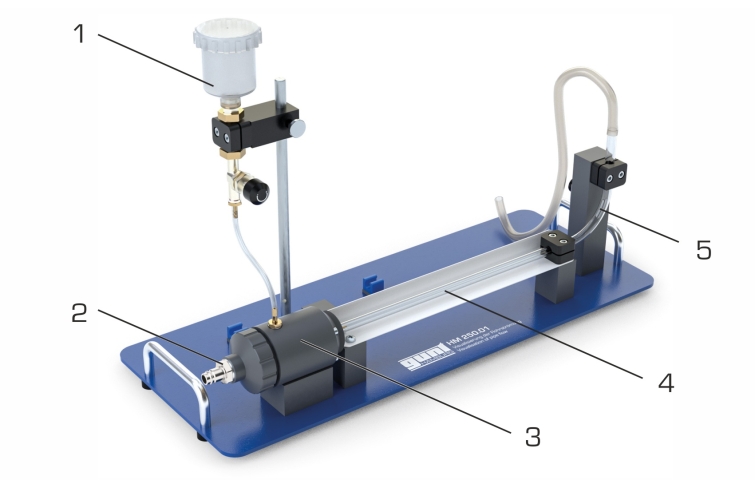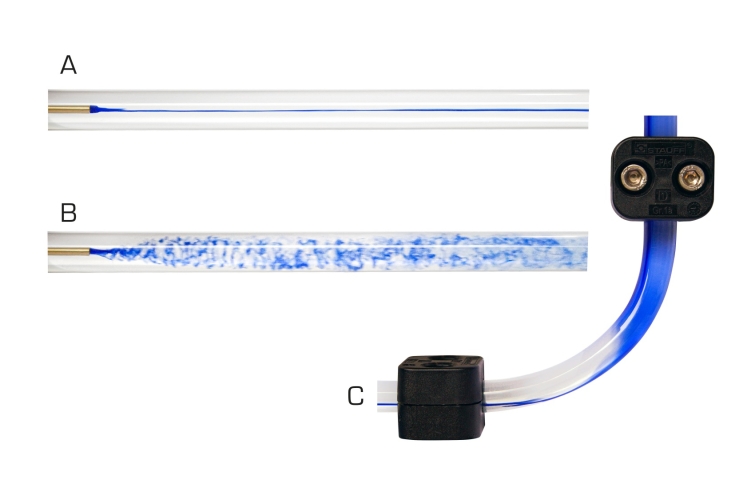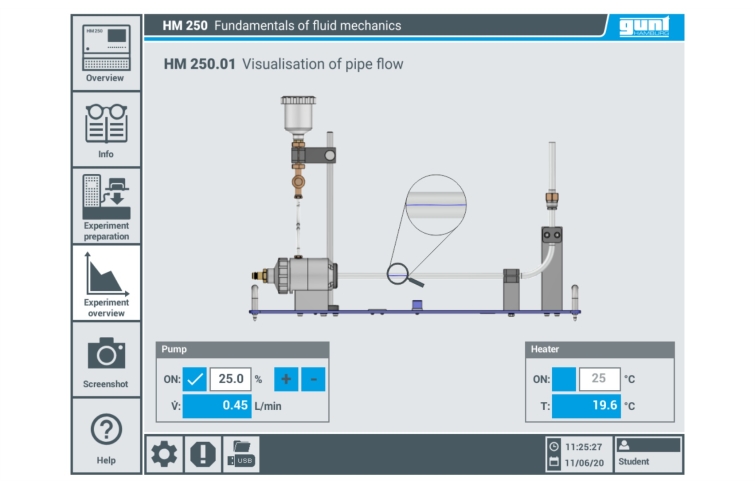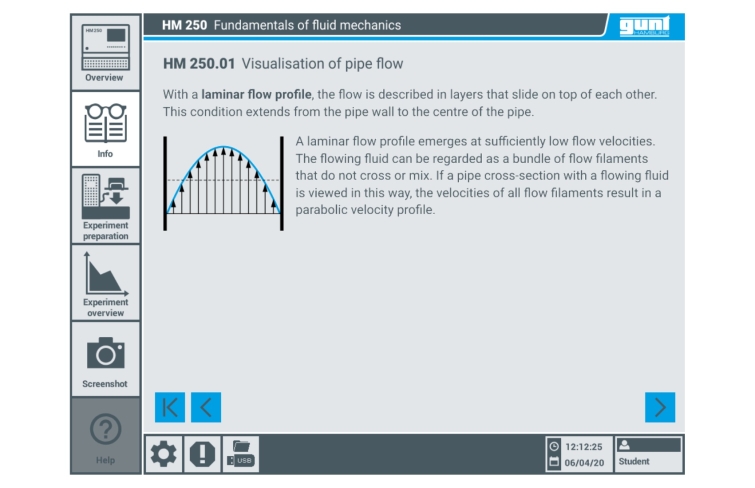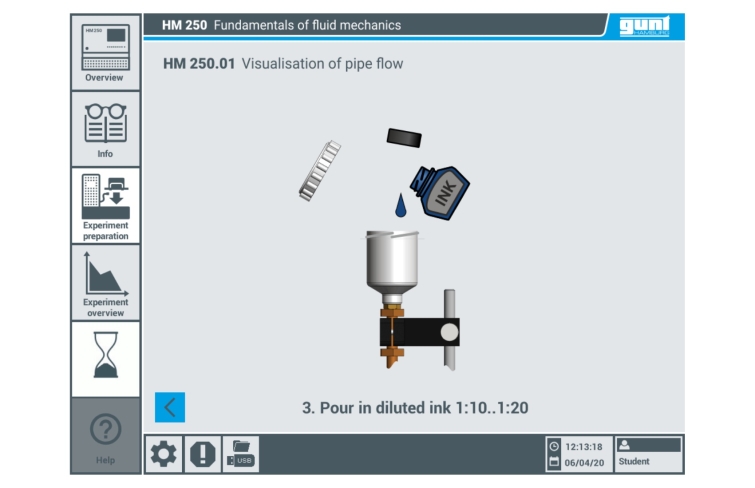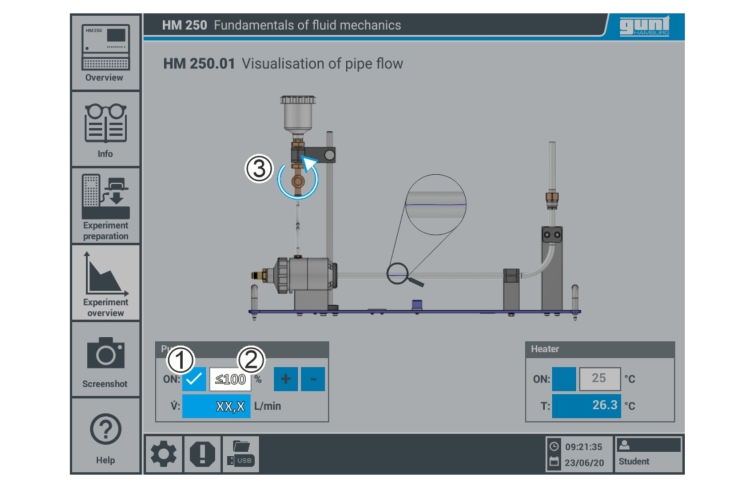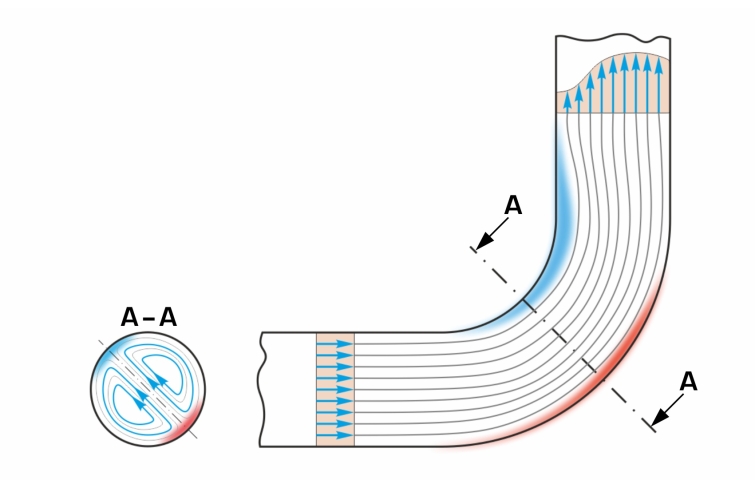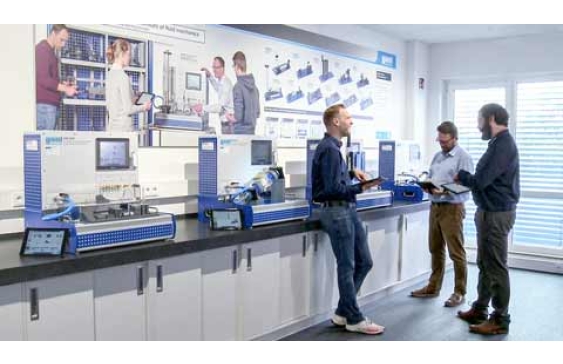To visualise laminar and turbulent flow, the Osborne Reynolds experiment is used. The transition from laminar to turbulent flow can be observed above a limiting velocity.
In the HM 250.01 unit, the streamlines at different flows are represented in colour using ink as a contrast medium.
The experimental unit consists of a transparent pipe section with streamlined inlet and a honeycomb rectifier. The pipe section contains a horizontal, straight pipe and a 90° pipe bend. At the end of the experiment, the working medium water is returned to the base module. Alternatively, the water can be collected separately to avoid turbidity during the experiment. A heater for heating the water is controlled via the base module and causes a change in viscosity.
In the experiment, ink is introduced into the flowing water as a contrast medium. Formation of the flow can be clearly observed. As the flow velocity increases, the first vortices are formed. These vortices increase with increasing flow velocity until ultimately the ink jet can no longer be detected. The formation of a secondary flow can be observed at the pipe elbow, especially with laminar flow.
The accessory HM 250.01 is easily and safely positioned on the worktop of the HM 250 base module. Via RFID technology the accessories are automatically identified, the appropriate GUNT software is loaded and an automatic system configuration is performed. The intuitive user interface guides through the experiments. For tracking and evaluation of the experiments, up to 10 external workstations can be used simultaneously using the local network via LAN connection. The base module supplies the water and is used for flow rate adjustment and measurement.



